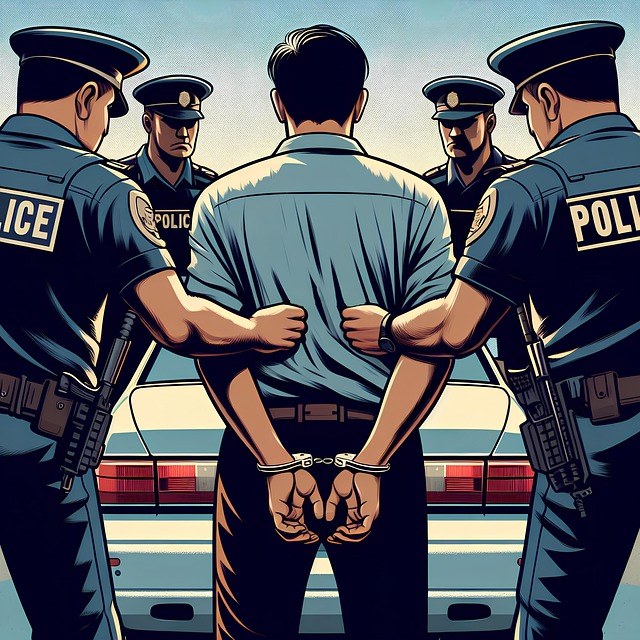
Introducing ‘crime’ and ‘harm’
May 27, 2025
Corporations, prisons and global perspectives
May 27, 2025Corporations, prisons and global perspectives
The concept of ‘the prison industrial complex’ suggests the significance of the relationship between transnational corporations which sell their services (such as running prisons) to several states. The operation of prisons in the pursuit of profit can further exacerbate existing inequalities with incentives to continually expand imprisonment (particularly of disadvantaged groups) regardless of the considerable harms flowing from imprisonment. Looked at from a zemiological viewpoint, the prison industrial complex seems to operate more in the interests of powerful states and corporations rather than serving the interests of justice or the interests of the populations which governments are ostensibly elected to serve.
Criminologists, politicians and media commentators interested in the role of prisons have tended to focus on how far prison ‘works’, and its role in the treatment and/or punishment of convicted criminals or those on remand. However, some criminologists have been involved in research and debates about the legitimacy of prisons, exploring their purported purposes, their ideological functions, and claims that they cause pain and suffering.
This then suggests that a social harm approach to prisons could also be useful. A key debate relates to the idea that prisons are part of a wider industry of crime control and punishment, with a complex and wide-reaching network of organisations involved, including the state, private (for profit) companies, and charities and not-for-profit organisations. Angela Y. Davis (2003) refers to this as the ‘prison industrial complex’, as an industry consisting not just of prisons, but of a host of surveillance, crime control, punishment, and ‘correctional’ activities, organisations, and institutions. Figure 7 illustrates these activities and institutions within the prison industrial complex.
However, what also stands out from the diagram, is the role of powerful non-state actors, such as those involved in the running of private prisons (or state-run prisons that outsource some of their work), the media, prison construction companies, investment banks and think tanks.
Multinational corporations and other non-state powerful actors have also had (and continue to have) roles in the New Orleans context (the site of the analysis of Hurricane Katrina), but in this section you will use concept of the prison industrial complex for further consideration of the relationship and debates about crime and harm, and the connections with inequality and power. However, in this section you will focus particularly on the role of powerful private corporations in relation to these, and to highlight the role of ‘the global’ in what might appear to be ‘local’ issues.
The media, think tanks and the prison industrial complex
John Harris’s article can be seen as an investigation of one among many multinational, globalised corporations which are paid by states to run parts of criminal justice systems around the world. However, Zemiologists are also very interested also in the potential harms that the media itself may produce.]
This is illustrated in a critical evaluation of a BBC Radio 4 programme aired in February 2013 which referred to the organisation called ‘Reform’, an organisation the programme presents as evidencing a claim that privately-run prisons are more effective than state-run ones. Mel Kelly, writing on the website ‘Shine a Light’ highlights a concern about the programme failing to inform listeners that, to quote her:
G4S, Serco and Sodexo all donate to Reform, which the BBC tells us is a ‘centre right think tank’ and which describes itself as an ‘independent, charitable, non-party think tank whose mission is to set out a better way to deliver public services and economic prosperity’.
(Kelly, 2013)

This then raises the question of whether corporate partners of an ‘independent non-party’ think-tank may be influencing the evidence produced by think-tanks, and questions as to whether such evidence is neutral and about the role of the media in potentially reinforcing views of what is or is not harmful or neutral without revealing the powerful influences – including corporations that have global influence – which may be involved. For this reason, ‘industries of punishment’ are seen not only in a local context, but are connected to a global industry of punishment involving relationships between stakeholders within and across and nations. Furthermore, as research on the prison industrial complex has shown, those with interests in the prison industrial complex also have interests in a range of other industries, and this could be seen in Harris’s article.
Prisons and social harm
Prisons, as conceptualised through the idea of the prison industrial complex, can be seen as creating and exacerbating ‘social harms’. A zemiological approach can be applied to prisons to identify and illustrate different types of social harm.
Hillyard and Tombs (2007) argued that there are four main types of social harm. These are: Physical harm (for example harms involving death, injury or illness)
Financial harm (for example harming the income, job security or credit rating of individuals)
Psychological harm (such as mental illness or anxiety)
Self-harm is a leading cause of morbidity in prisoners. Although a wide range of risk factors for self-harm in prisoners has been identified, the strength and consistency of effect sizes is uncertain. We aimed to synthesise evidence and assess the risk factors associated with self-harm inside prison.
The prison industrial complex
Criminologists, politicians and media commentators interested in the role of prisons have tended to focus on how far prison ‘works’, and its role in the treatment and/or punishment of convicted criminals or those on remand. However, some criminologists have been involved in research and debates about the legitimacy of prisons, exploring their purported purposes, their ideological functions, and claims that they cause pain and suffering. This then suggests that a social harm approach to prisons could also be useful. A key debate relates to the idea that prisons are part of a wider industry of crime control and punishment, with a complex and wide-reaching network of organisations involved, including the state, private (for profit) companies, and charities and not-for-profit organisations. Angela Y. Davis (2003) refers to this as the ‘prison industrial complex’, as an industry consisting not just of prisons, but of a host of surveillance, crime control, punishment, and ‘correctional’ activities, organisations, and institutions. Figure 7 illustrates these activities and institutions within the prison industrial complex.

However, what also stands out from the diagram, is the role of powerful non-state actors, such as those involved in the running of private prisons (or state-run prisons that outsource some of their work), the media, prison construction companies, investment banks and think tanks.
Multinational corporations and other non-state powerful actors have also had (and continue to have) roles in the New Orleans context (the site of the analysis of Hurricane Katrina), but in this section you will use concept of the prison industrial complex for further consideration of the relationship and debates about crime and harm, and the connections with inequality and power.
However, in this section you will focus particularly on the role of powerful private corporations in relation to these, and to highlight the role of ‘the global’ in what might appear to be ‘local’ issues.
In this systematic review and meta-analysis, we searched four electronic databases (PubMed, Embase, Web of Science, and PsycINFO) for observational studies on risk factors for self-harm in prisoners published from database inception to Oct 31, 2019, supplemented through correspondence with authors of studies.
We included primary studies involving adults sampled from general prison populations who self-harmed in prison and a comparison group without self-harm in prison.
We excluded studies with qualitative or ecological designs, those that reported on lifetime measures of self-harm or on selected samples of prisoners, and those with a comparison group that was not appropriate or not based on general prison populations.
Data were extracted from the articles and requested from study authors. Our primary outcome was the risk of self-harm for risk factors in prisoners.
We pooled effect sizes as odds ratios (OR) using random effects models for each risk factor examined in at least three distinct samples. We assessed study quality on the basis of the Newcastle-Ottawa Scale and examined between-study heterogeneity. The study protocol was registered with PROSPERO, CRD42018087915.
The wide range of risk factors across clinical and custody-related domains underscores the need for a comprehensive, prison-wide approach towards preventing self-harm in prison.
This approach should incorporate both population and targeted strategies, with multiagency collaboration between the services for mental health, social care, and criminal justice having a key role.

